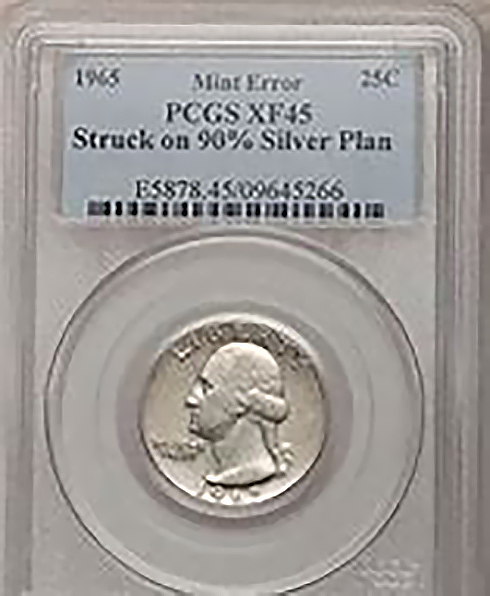The early 1960s were interesting times for coin collectors. It seems people became aware of the fact that valuable coins could be found in circulation. This caused many people to dabble in the hobby, but things soon got out of hand when collectors and even average citizens began to believe any ordinary coin would become valuable. This led to a stampede on the banks by people who wanted to buy bags of coins fresh from the mint. Anyone who had a sympathetic teller at a bank could go in and buy a bag of coins and either take it home in hopes of making a huge profit, or just flip it to someone with that same dream. Needless to say, this caused a problem for merchants who relied on these banks to provide coins for use in their business. The mints ramped up production, but the problems persisted. Bag quantities of coins are $50 for cents; $200 for five-cent coins; $500 for dimes; $1000 for quarters and $2000 for half-dollars. Because of the face value of these bags, most people involved opted for the cent or five-cent bags, but those who could afford the others made out, as you will soon see.
On Nov. 22, 1963, President John Kennedy was assassinated in Dallas. His immense popularity led to a desire to issue a coin in his honor. The mint wasn’t interested in striking a commemorative coin, but a circulated coin could be replaced. The current coins that featured presidents Lincoln, Jefferson and Washington were safe. But the half-dollar pictured Benjamin Franklin. In 1890 legislation was passed that required the design of a coin to remain in production for a minimum of 25 years. Even though the Franklin half had only been produced for 16 years, a special law was passed which bumped Ben to make room for the Kennedy half-dollar in 1964. If anything, this added to the coin bag mania, as many bags of Kennedy halves were hoarded.
The mints were dealing with another problem in 1964, and that was the fact the silver used to strike dimes, quarters and half-dollars was worth more than the face value of the coins, so it was decided to eliminate the silver in dimes and quarters, replacing the silver with a sandwich of nickel-coated copper, and to replace the 90% silver with 40% in the half-dollar, all starting in 1965. This marked the end of the 90% silver coins, or did it?
Mint records show that silver quarters were struck in the Philadelphia Mint in both 1964 and 1965, although all coins bear the date 1964. The San Francisco Mint, which had been inactive since 1955, was brought out of moth balls to strike silver quarters dated 1964 during the years of 1965 and 1966, all without mintmarks. This was done because of then President Johnsons’ belief that the 2 different metal coins would circulate side by side when in fact the hoarders prevailed by removing the silver coins from circulation.
There was a similar situation with the new Kennedy half-dollar with the Philadelphia and Denver Mints striking 90% silver 1964 dated coins in 1965 and 1966.
And how did the hoarders make out? Well, those who saved cent and nickel bags only recovered their face value, but those with silver dime, quarter and half-dollar bags of coins, if they were able to hang on until 1980s “silver rush,” increased in value by up to 25 times the face value of their coins. Not a bad return on investment.
Douglas Keefe and his wife Linda are owners of Beachcomber Coins and Collectibles in Egg Harbor Township. It is their only location.














